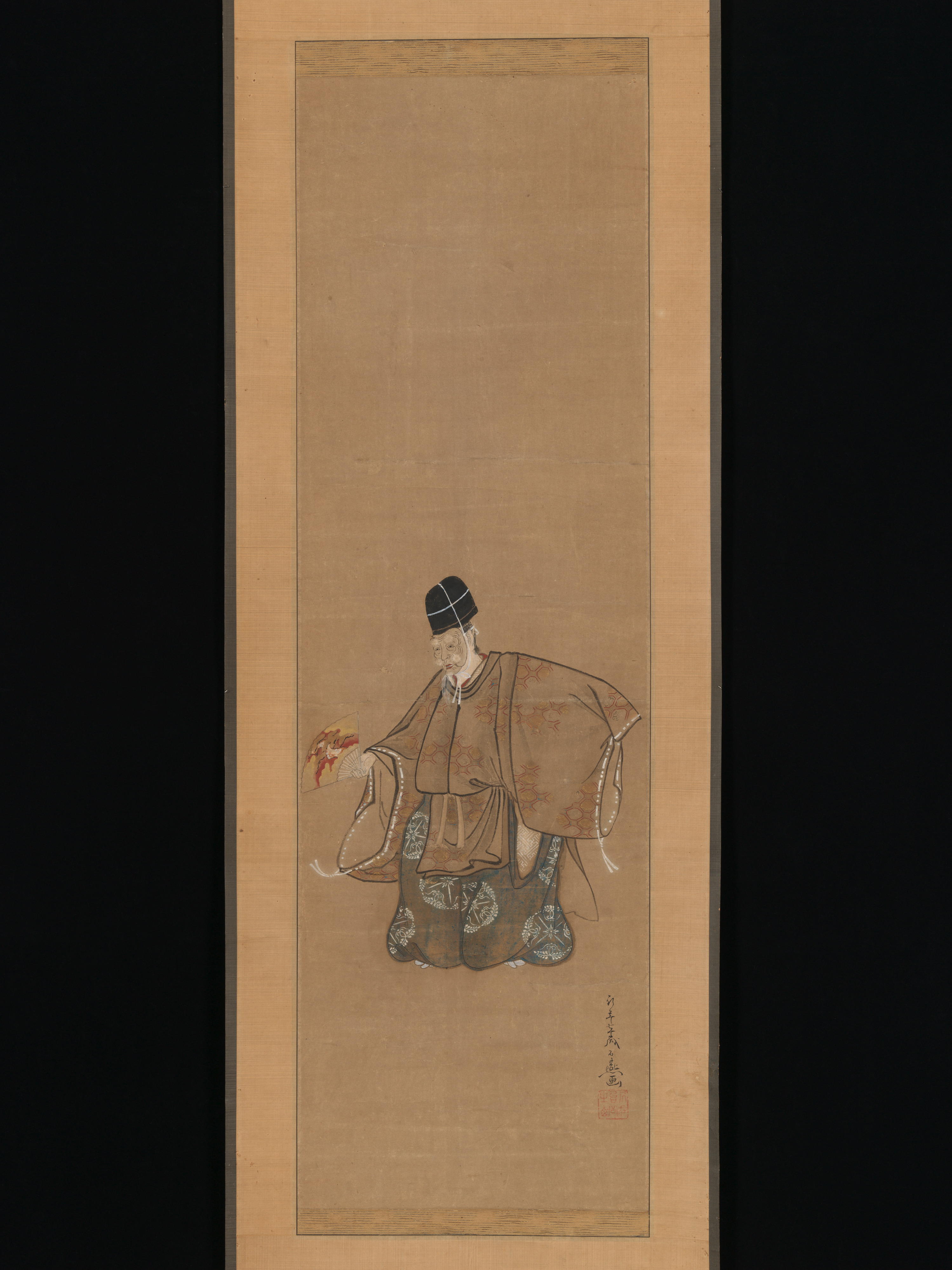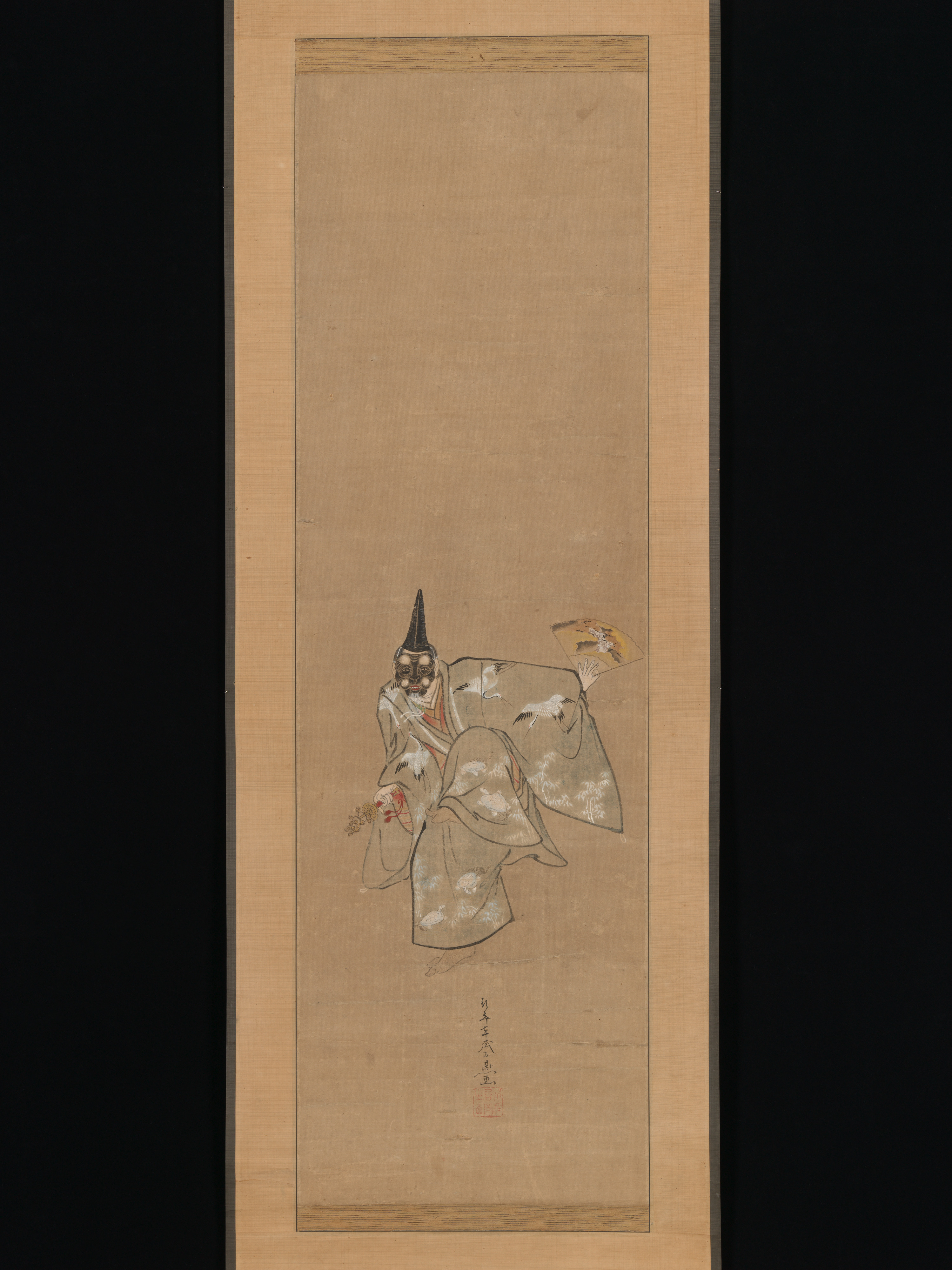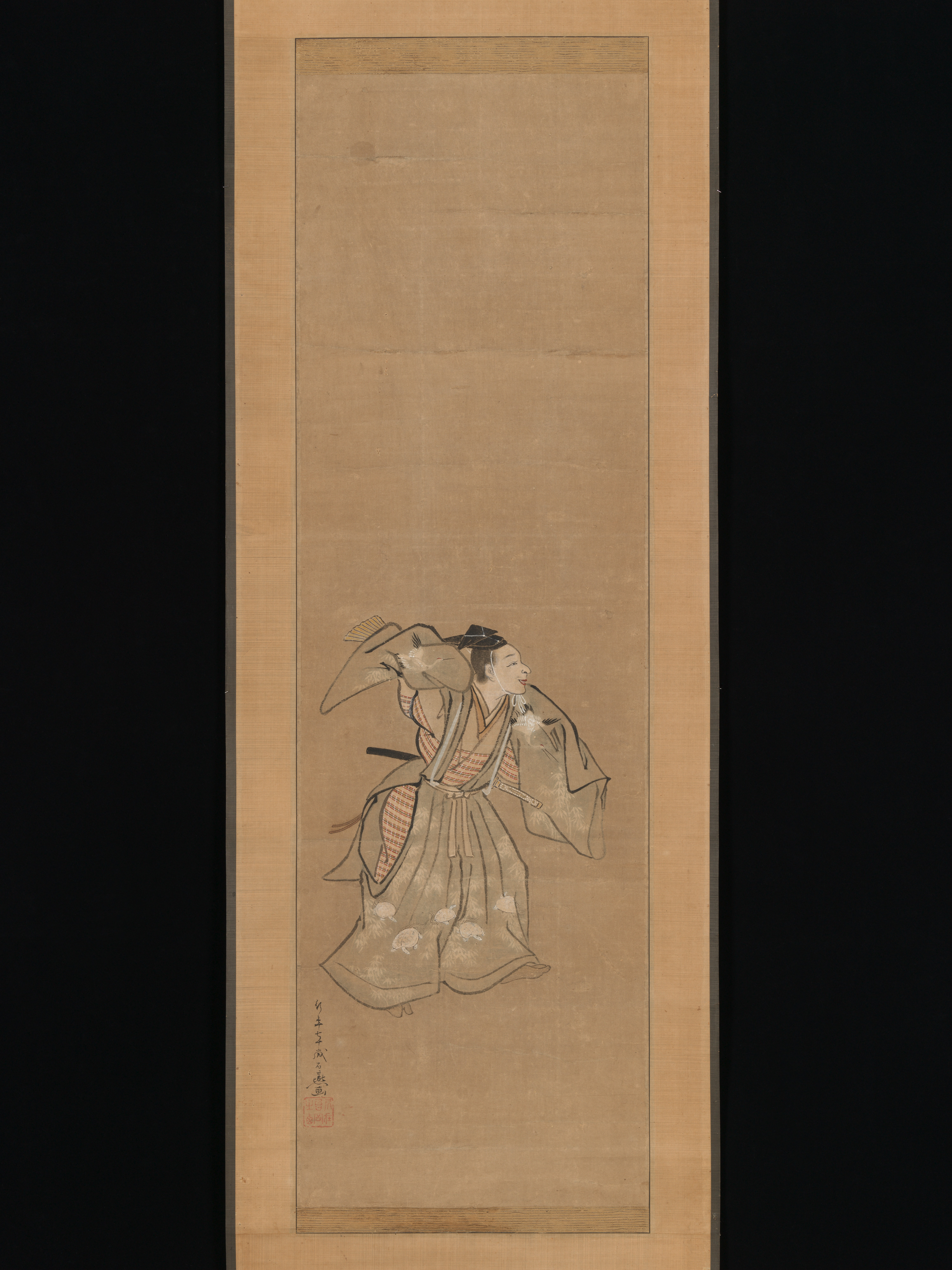The Auspicious Noh Dance "Okina"
Toriyama Sekien Japanese
Not on view
Three dancers perform movements from the ritualized dance called Okina, literally, “Old Man,” or Sanbasō. Performed before the formal program of Noh plays begins, it is a dance without narrative content that is reserved for special occasions such as New Year’s festivities, prayers for prosperity of the nation, and ceremonies to purify the site of a Shinto shrine.
On the right is the protagonist Okina, wearing the white mask of an old man and donning an over-robe (kariginu) decorated with a tortoiseshell pattern, a symbol of longevity. The cranes and tortoises that adorn the costumes of the two other dancers are also emblems of longevity. The black mask and the bells held by the dancer on the center scroll identify him as Sanbasō, “the third old man.” On the left is Okina’s young male companion, Senzai, meaning “a thousand years of age.”
The artist Toriyama Sekien was trained in the Kano school, but he also created designs for woodblock prints and book illustrations and was the teacher of the celebrated ukiyo-e artist Kitagawa Utamaro (1753–1806).
This image cannot be enlarged, viewed at full screen, or downloaded.
This artwork is meant to be viewed from right to left. Scroll left to view more.








